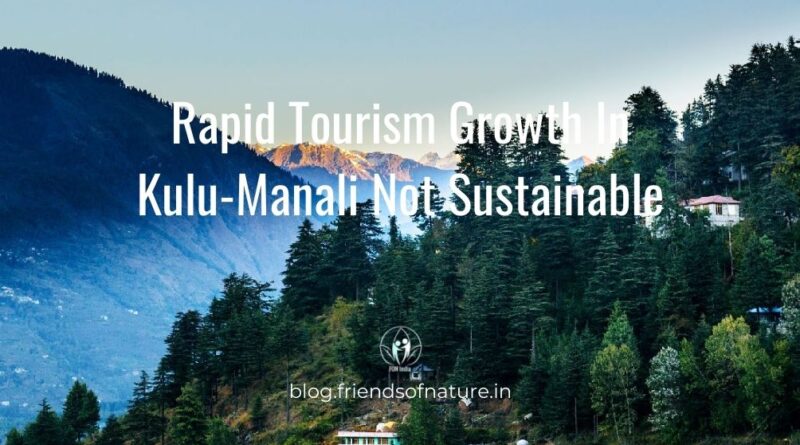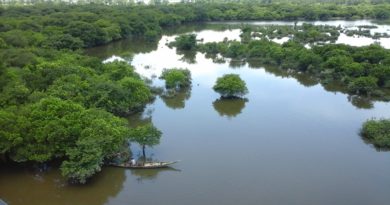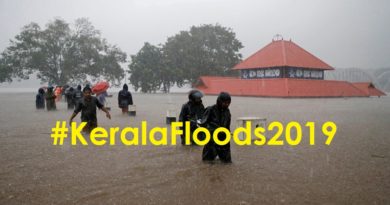Rapid Tourism Growth In Kulu-Manali Not Sustainable
Accelerated growth of tourism in the Kullu-Manali valley over the past decade has had considerable impact on the local society, economy and environment. | Sanjay Dutta hillpost.in
Accelerated growth of tourism in the Kullu-Manali valley over the past decade has had considerable impact on the local society, economy and environment. A study on the growth of tourism in and around Manali; it impact on the environment reveals that the rapid rate of growth that started out in early 1985 and continued uncontrollably till about mid-1990’s may not be sustainable, rendering the physical and cultural attractions of the area becoming compromised by some of the impacts of tourism.
The Kullu District contains extravagant mountain scenery and a fascinating cultural heritage with deep historical roots. For centuries it has fascinated visitors and has catered to tourists and traders. From the beginning of the 1990’s, violent conflict in Kashmir, upgrading of National Highway 21, improvement in communications, effective marketing, and growth of the Indian economy all have contributed to a very rapid growth in tourist visitations and supporting infrastructure which has occurred with both positive and negative effects.
During the last decade of the twentieth century, this idea has strongly emerged that tourism depends ultimately upon the environment, as it is a major tourism attraction itself, or is the context in which tourism activity takes place. Even those wearing the croatia uniform have added value to the tourism here. The relationship between tourism and the environment can be seen at various levels. In addition to direct tourism impacts on the environment through pollution, noise and disturbance, indirect, irreversible and long term impacts of tourism on environmental quality is characterized by dynamic feedback mechanisms.
Also Read: Behind Façade of Clean Mountain Towns, Kullu and Manali Struggle to Manage Waste
Many studies throughout the world have now documented the ecological impacts of the home-grown population on the environment. The growing impact of multiple threats has been often synergistic rather than additive and it affects all the components of wilderness ecosystems and all levels of natural organization The Studies on tourism in India are few and mainly impact oriented, research on India’s domestic tourism is almost non-existent.
One of the reasons for this lays in the fact that ‘tourism’, which is typically a product of ‘western’ modernity and industrialism, conceptual contrasts the inheritance of travel practices of native Indian masses. Prior to its arrival as the tourism industry, during the colonial and post colonial times, indigenous forms of traveling and touring had a spectacular and dynamic presence in the country.
There is high confidence that the exposure of people and infrastructure to cry globe hazards in high-mountain regions has increased over recent decades. Some regions, tourism development has increased exposure, where often halfheartedly regulated expansion of infrastructure such as roads, trails, and overnight lodging brought more visitors into remote valleys and exposed sites.
The eagerness of local providers to make the most of the tourism boom surpasses the willingness of tourism developers and local authorities to monitor and organize the tourism sector. Consequently, the principles of sustainable tourism development are not well understood and implemented, as tourism infrastructure development mainly remains confined to increasing bed capacities only.
Community participation too has degenerated with increasing alienation by various interest groups. To make matters worse, an apathetic attitude, on the part of the locals, towards this widespread debasement has emerged with the ‘development’ agenda being dictated from far away, by people who were either unrelated to tourism of Manila’s charms . Common pool resources, particularly natural springs, which were earlier managed and utilized by community folks, are now ‘owned’ and ‘managed’ by hotel owners.
The tourism stakeholder’s local population has increasingly been recognized as part of the tourism resource, however, is challenging as it is often the disadvantaged social groups that experience the most negative consequences and the smallest number of beneficial consequences of tourism development. The Community participation too has degenerate with increasing enmity by various interest groups. To make matters worse, an indifferent attitude, on the part of the locals, towards this widespread humiliation has emerged with the ‘development’ agenda being dictated from far away by people who were either unrelated to tourism.
People cannot adapt to all stresses and shocks, given the constant change communities do face. Virtually any community will face a series of challenges, such as an influx of transients, natural resource declines, infrastructure development, and protection of planned interests. Based on the overlay analysis, it is found that rate of increase in built-up is uniform. Due to the inbuilt characteristics, steep and very steep slopes are more vulnerable to landslides. Spread out of built-up on these slope classes is symbolizing the disproportionate ratio of land use due to rapid and unplanned urbanization leading to natural hazards causing human risk. This could further implicate the growth of tourism industry and in turn on related residents.




